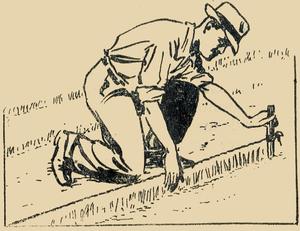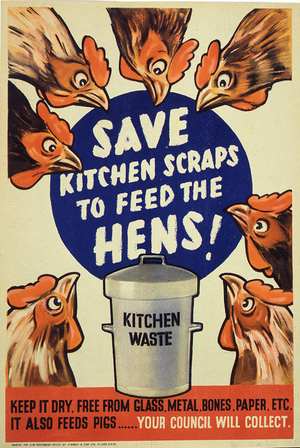Attend to the Compost Heap
The importance of compost was described in the January Guide, and the March issue dealt with how to make it. May is the time of the year when further materials such as waste vegetable matter, coarse grass, lawn mowings and annual weeds, become available for the heap. While not forgetting the needs of domestic livestock, all the waste material that can be collected should be rotted down on the compost heap.
Look out for PESTS
If you are growing broad beans, look out for signs of black fly and tackle this pest early, as advised on page 6 of the April Guide. If you are growing early turnips, you may be troubled with the flea beetle. Last month’s Guide also dealt with that.
To prevent the depredations of the onion fly, sprinkle 4% calomel dust along the rows of spring onions when the seedlings are about I½ in. high ‘, repeat about 10 days later.
 Your seedling carrots may suffer from the carrot fly, so apply naphthalene dust to the rows and repeat at 10-day intervals until the end of June.
Your seedling carrots may suffer from the carrot fly, so apply naphthalene dust to the rows and repeat at 10-day intervals until the end of June.
Some gardeners put lengths of creosoted string about 2 in. above their carrot rows, and find this wards off the carrot fly. You will need to dress the string with creosote three times (at fortnightly intervals, beginning mid-May) for early sowings and five times for the maincrop. You can put the creosote on with a brush or take the string up and re-dip it. You must not allow any of the liquid to splash on to the plants or it will “burn” the leaves.
About the chemicals
Calomel which is mercury based, is now banned.
Napthalene, the active ingredient in traditional moth balls is now banned.
Creosote is being used here for its strong smell. It is made from coal tar and was generally and cheaply available from 1836 to 2003. In 2003 it became an offence for the general public to purchase and apply coal tar creosote. It is, however, still available to trade and professional users.
It is said interplanting onions confuses the carrot fly but, in my experience, it isn’t very successful. Covering with environmesh or horticultural fleece does work well.


